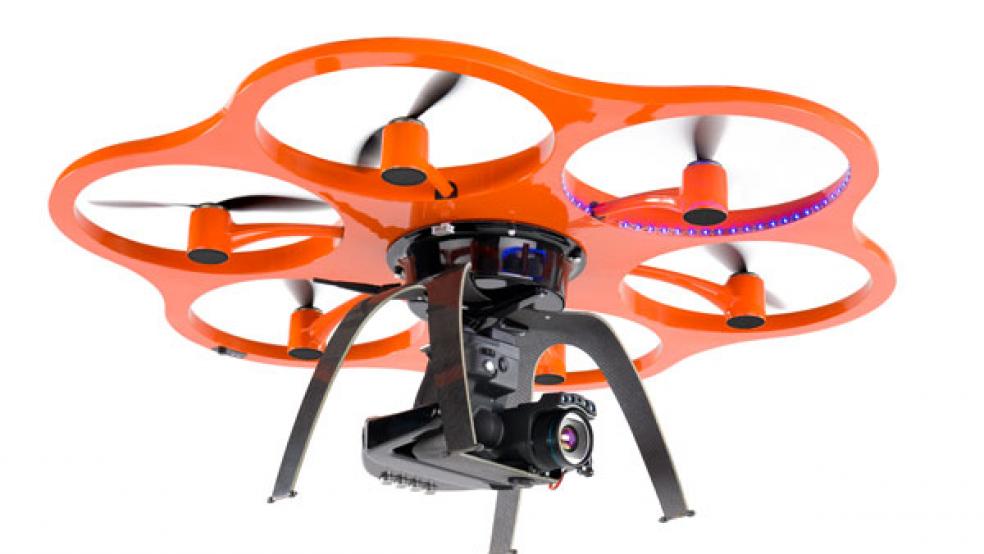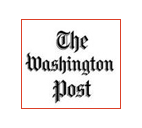Thousands of businesses could receive clearance to fly drones two years from now under proposed rules that the Federal Aviation Administration unveiled Sunday, a landmark step that will make automated flight more commonplace in the nation’s skies.
Meanwhile, the White House on Sunday issued presidential directive that will require federal agencies for the first time to publicly disclose where they fly drones in the United States and what they do with the torrents of data collected from aerial surveillance.
Related: Trouble with Our Armed Drones in Yemen
Together, the FAA regulations and the White House order provide some basic rules of the sky that will govern who can fly drones in the United States and under what conditions, while attempting to prevent aviation disasters and unrestrained government surveillance.
The FAA’s draft rules would make it relatively simple for real estate agents, aerial photographers, police departments, farmers and anyone else to fly small drones for work purposes. Operators would need to pass a written proficiency test, register the drone and pay about $200 in fees — but would not have to obtain a regular pilot’s license or demonstrate their flying skills.
The long-awaited regulations — the FAA had been drawing them up for several years — are expected to lead to a revolution in commercial aviation. But they must first undergo a lengthy period of public review and comment that is projected to take at least until early 2017. Once the rules are finalized, the FAA estimates that more than 7,000 businesses will obtain drone permits within three years.
“We’re putting forward what we believe to be the safest possible approach at the moment, but of course we look forward to hearing back from the public,” Transportation Secretary Anthony Foxx told reporters Sunday on a conference call.
Related: Drones: The Hot New Field for Degrees and Jobs
The proposed regulations carry some significant limitations. Businesses would be allowed to fly drones only during daylight hours. And drones would have to remain within eyesight of the operator or observers posted on the ground.
The drones could fly no more than 100 mph and would have to stay below an altitude of 500 feet to avoid the risk of colliding with other aircraft. They would also be prohibited from flying over bystanders not directly involved in their operation.
As a result, companies would not be permitted to fly drones over long distances. That would effectively preclude companies such as pizza makers, Amazon.com and newspaper companies from delivering goods to customers’ doorsteps via drone (Amazon’s chief executive, Jeffrey P. Bezos, also owns The Washington Post). The rules, however, are expected to be modified and loosened over the coming decade as drone technology advances.
Unlike with regular aircraft, the FAA would not require drone operators or manufacturers to certify in advance that the drones are safe to fly. Michael Huerta, head of the FAA, said such a requirement is unnecessary because small drones “pose the least amount of risk to our airspace.”
Related: 12 Weird Uses for Drones
The regulations would apply only to drones weighing 55 pounds or less. The FAA is still drafting rules for larger drones, and those are expected to take several more years to sort out.
In addition, FAA officials said they are considering a separate set of rules for “micro-drones” that weigh less than 4.4 pounds. Under those rules, operators would not have to pass any kind of test; they would only have to submit a written statement to the FAA promising that they were familiar with basic aviation safety measures.
The proposed FAA rules for small drones would not apply to people who fly drones for fun or for recreational purposes. Small hobby drones have become hugely popular in the United States, but under a law passed by Congress in 2012, the FAA is largely prohibited from regulating them as long as they do not interfere with air traffic.
Congress also ordered the FAA to integrate drones into the national airspace by September 2015. Bogged down by staff shortages and a slow-moving regulatory structure, however, the FAA has been slow to keep up with rapid technological advances in the drone industry and has missed several deadlines to introduce regulations.
Related: 10 Coolest Drones You Can Buy
Until now, the FAA has relied on an interim patchwork of guidelines. Businesses are prohibited from flying drones without special approval. Recreational drone flights are allowed as long as the aircraft stay below 400 feet and five miles away from an airport. The military and other government agencies need a certificate to fly in civilian airspace.
The guidelines, however, have been routinely ignored by drone enthusiasts. Pilots across the United States have reported a surge in near-collisions with small unlicensed drones, presenting a major threat to aviation safety.
Huerta, the FAA administrator, said the agency’s gradual approach to adopting regulations, despite pressure from the drone industry to move faster, was designed to enhance safety. “We need to do this in a staged way that ensures the highest levels of safety, because that’s what people expect,” he told reporters.
When asked how the FAA would verify that drone pilots get a license and do not flout safety restrictions, Huerta said the agency relies on public education campaigns but also has enforcement tools, such as the power to levy fines, at its disposal.
Related: Drones Could Cause the Next Mid-Air Disaster
“What we want to do is ensure that anyone who is flying in a careless or reckless manner that would be endangering the public or other users of the airspace, that we take appropriate enforcement action,” he said.
In reality, FAA officials have acknowledged that it is extremely difficult to police the skies or crack down on rogue drone pilots. Most drones are too small to appear on radar. And even when they are spotted near airports or intruding into congested airspace, it is hard to chase them, much less to track down whoever is flying them by remote control.
Although the proposed regulations announced Sunday are tailored for commercial drones, they are expected to trigger a huge expansion in drone use by government agencies, such as police and fire departments.
Under current rules, agencies must go through a cumbersome application process to win FAA approval to fly drones, determined on a case-by-case basis. The new regulations would lift many of those obstacles. Law enforcement agencies could fly their own drones to conduct surveillance or could hire a contractor to do so.
Related: Drones Post Fresh Threat to Commercial Air Safety
The FAA and the White House had intended to unveil their drone rules later this month. But an official document highlighting some of the proposed regulations was inadvertently posted on a federal Web site Friday night, prompting the Obama administration to announce the changes in the middle of a holiday weekend.
While the FAA rules are designed to exploit the economic potential of drones without jeopardizing aviation safety, the order issued Sunday by President Obama is intended to safeguard personal privacy and require the federal government to be more forthcoming about when and where it uses drones to conduct surveillance.
All federal agencies, for example, would have to disclose where they conduct drone operations within the United States, as well as their policies for storing and protecting personal information collected from surveillance flights. Agencies would also have to issue an annual report detailing the types of missions they flew in the previous year.
The order will have a large impact on the Defense Department and law enforcement agencies such as the FBI and the Department of Homeland Security, which uses drones to patrol the nation’s borders. The FBI has been especially secretive about its drone operations, even ducking lawmakers’ queries about how many it has and how often they are used.
Related: How Drones Could Help America's Infrastructure
“It is a very big deal and a very positive step,” said Lisa Ellman, a former Justice Department official who helped prepare the presidential order and works on drone issues as a lawyer in private practice. The agencies, she said, “understand that even with all the benefits of drones, the American public has concerns — concerns about privacy and concerns about accountability.”
In addition, Obama directed the Commerce Department to work with companies and the drone industry to develop a voluntary code of conduct for the private sector regarding surveillance and privacy protections.
This article originally appeared in The Washington Post.
Read more at The Washington Post:
Video Prompts Egypt to Bomb ISIS
A Bad Investment in Putin
Danish Attacks Echo France





